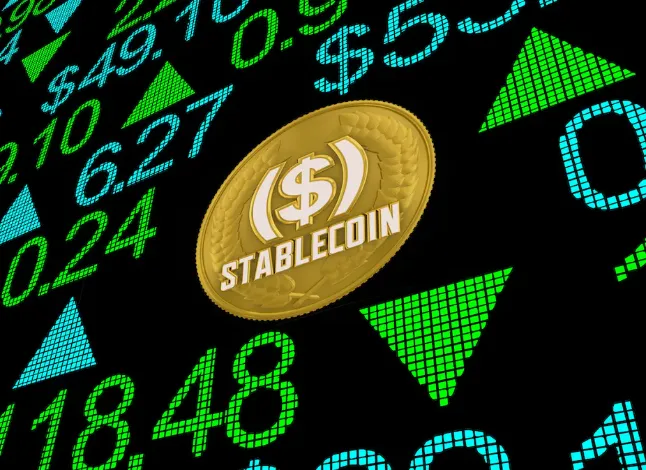
Banking regulators have expressed an increasing sense of caution to the rapid growth of stablecoins to safeguard individuals and the economy. Originally designed to counter the volatility of traditional cryptocurrencies, the question arises whether stablecoins have lived up to their name in terms of stability. According to a recent report by the Bank of International Settlements (BIS), none has consistently maintained parity with their peg, regardless of size or backing type. There is no current assurance that stablecoin issuers could redeem users' stablecoins in full and on demand. The report highlights that existing stablecoins fail to meet the essential criteria for serving as a secure store of value and a reliable means of payment in the real economy.
Volatility to stability
Stablecoins were created to mitigate the inherent volatility of traditional cryptocurrencies like Bitcoin. Cryptocurrencies, while revolutionary in their decentralised nature and borderless transactions, often experienced significant price fluctuations, making them less practical for everyday transactions and a store of value. Stablecoins addressed this issue and provided the benefits of cryptocurrencies while maintaining a stable value.
These digital assets are typically pegged to the value of traditional fiat currencies like the US Dollar or other stable assets like gold or other commodities. The pegging mechanism helps stabilise the value of stablecoins, making them less susceptible to the wild price swings observed in the broader cryptocurrency market.
Stablecoins serve various purposes in the crypto space. They offer a reliable medium of exchange, acting as a bridge between the crypto and traditional financial systems. Users can benefit from the efficiency and security of blockchain-based transactions without being exposed to the extreme volatility of other cryptocurrencies. Stablecoins also facilitate easier and faster cross-border transactions and serve as a more predictable unit of account for decentralised applications, contributing to the broader adoption and utility of blockchain technology.
Creating a rulebook
The introduction of stability to an unpredictable and volatile asset was embraced enthusiastically, given the promising early indications of use cases. Stablecoins enable seamless peer-to-peer digital transfers, eliminating the need for multiple international bank accounts. With just one crypto wallet, users can efficiently send funds across borders, simplifying the digital finance experience. However, the critical factor determining the success of stablecoins is boiled down to their actual stability. Unlike traditional banks, which operate under strict regulations and licensing, Tether, a prominent stablecoin, operated with minimal oversight, a common practice in the cryptocurrency industry. The house of cards began to collapse when it was revealed that Tether lacked sufficient reserves, leading regulators to conduct more comprehensive investigations into stablecoins. Past controversies surrounding stablecoins prompted global authorities to establish stricter frameworks and regulations.
The European Union implemented the Markets in Crypto Assets regulation (MiCA) in 2024, making it the inaugural major jurisdiction to establish comprehensive cryptocurrency regulations. MiCA, applicable from 30 December 2024, with stablecoin provisions taking effect from June of the same year, introduced specific rules for stablecoins designated as "e-money tokens" (EMTs) if linked to a fiat currency's value or "asset-referenced tokens" (ARTs) otherwise. These stablecoins must uphold adequate reserves and comply with robust governance standards. The regulatory constraints escalated with the tokens' widespread usage, with stablecoins not pegged to the Euro confronting an outright ban on exceeding 1 million transactions per day, aiming to safeguard the euro's dominant position. While MiCA marked a significant stride, it was not the final regulatory word. It allowed for a six-month preparatory period for industry players and regulators before the stablecoin provisions became operational.
Stablecoins have stirred discussions in India and may have played a pivotal role in the development of India's central bank digital currency (CBDC). Reserve Bank of India Deputy Governor, Rabi Sankar has voiced concerns about stablecoins, viewing them as a threat to policy sovereignty and emphasising their benefits to only a few countries. Sankar stressed that CBDCs provide more stable solutions for every country than stablecoins. While stablecoins may be advantageous for economies like the US and Europe, where they are linked to their respective currencies, Sankar warned of potential risks in a country like India, including replacing the Indian rupee in the domestic economy.
Besides the issue of policy sovereignty, ensuring that stablecoins maintain their value and are supported by sufficient reserves—the two conditions that define them as stablecoins, form a critical element of stablecoin regulation in India. However, it is increasingly observed that this is not the case.
Stability under scrutiny
The evaluation of stablecoins unveils a disconcerting truth: the stability promised by these digital assets remains elusive. Despite their intended purpose of pegging to traditional fiat currencies or commodities to maintain a stable value, a closer look at their performance tells a different story. The study by the BIS reveals a stark disparity between different types of stablecoins. Fiat-backed stablecoins pegged to traditional currencies, demonstrate a better track record in maintaining parity with their pegs than their crypto- and commodity-backed counterparts. Stablecoins, whether backed by fiat currency, commodities, or other cryptoassets, typically achieve one of their frequently cited objectives, which is to exhibit lower volatility compared to traditional cryptocurrencies like Bitcoin.
However, challenges persist even within the supposedly more stable category of fiat-backed stablecoins. Only a handful, including Tether and USD Coin, have consistently kept deviations from their pegs below 1 percent for a significant portion of their existence. Notably, even these relatively successful stablecoins fluctuate beyond the expected band around their pegs, casting doubts on the concept of stability.
The analysis also highlights the influence of the currency to which stablecoins are pegged. Stablecoins tied to the US dollar and the euro perform better in tracking their pegs than those pegged to other stablecoins or volatile currencies like the rupiah, Singapore dollar, and Turkish lira.
In essence, the assessment underscores a fundamental challenge: stablecoins, despite their nomenclature, grapple with inherent instability. The promise of maintaining a fixed value seems challenging to fulfil, raising questions about the reliability of stablecoins as a secure store of value or medium of exchange in the ever-evolving landscape of digital finance.
In search of Stability
Persistent challenges surround stablecoins, casting uncertainty on their capacity to sustain a stable peg. None of the assessed stablecoins achieved full price stability, raising concerns about their credibility and the transparency of reserve assets. The lack of assurance that issuers possess the necessary assets for coin redemption adds to these uncertainties, hindering trust in stablecoins as a secure store of value and reliable payment method. Significant data gaps regarding usage, users, and actual activities pose obstacles to understanding stablecoins' risks fully.
Despite their instability, stablecoins continue to proliferate. PayPal's introduction of PYUSD in August 2023, albeit representing a small fraction of the market, underscores the potential of stablecoins. Continued monitoring and proactive policymaking are imperative, considering the evolving and elusive nature of this space. While regulation will address some shortcomings, complementary efforts, such as advancements in payment infrastructures and exploring central bank digital currencies (CBDCs), are essential. These efforts aim to provide legitimate benefits in payments and financial services, addressing the public demand for cheaper cross-border transactions and programmability. Given the escalating global regulations, there is a need for ongoing scrutiny of these digital assets and the broader implications of cryptocurrency. Observing whether regulations will genuinely ensure the consistent and long-term stability of stablecoins remains intriguing.
Sauradeep Bag is Associate Fellow at the Observer Research Foundation.
The views expressed above belong to the author(s). ORF research and analyses now available on Telegram! Click here to access our curated content — blogs, longforms and interviews.




 PREV
PREV


